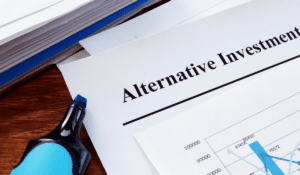Alternative Investments – Part 2 – that will be the topic of today’s article.
Table of Contents
Introduction
In the previous article, i.e., Alternative Investments – Part 1, I covered important information about real estate, precious metals, hedge funds, and private capital.
Today, I will focus on other types of alternative investments, which include:
— Venture Capital
— Funds of funds
— Art
— Wine
— Natural resources
As I will also discuss the advantages and disadvantages of these types of investments, you will get a better understanding of them.
Furthermore, this information will help you in deciding whether or not it is better to add them to your portfolio.
Without any delay, we will start getting into the topic for today, i.e., “Alternative Investments”.
Venture Capital

Venture capital funding or venture capital financing is a form of investment only for accredited investors.
Investment banks, financial institutions, or high-net-worth individuals form venture capital companies. Such venture capital companies offer financial aid to companies that are either start-ups or have the potential for growth.
Most people have a misconception that there is no difference between venture capital and private equity.
However, that’s not entirely true because private equity refers to huge investments in developed and struggling companies.
On the other hand, venture capital is not a hefty investment, and it is only targeted toward initially developing companies.
Private equity is also made only in companies that are not listed on a stock exchange.
There are some differences as well, which make venture capital different from private equity.
It usually started out as a small activity during the end of world war 2, which became an innovative business today.
Advantages and disadvantages of venture capital
Now, we have a look at some of the pros and cons of investing and getting involved with venture capital. Let’s begin with the benefits.
— To begin with, startup companies or those in their early stages of business need extra capital to boost their business activity. Such entities can definitely profit from venture capital, yet this is from a business standpoint.
— Another benefit for businesses is that they do not need to secure the capital they receive.
— Venture capital is not limited to funds, instead, it also refers to networking, workforce, and other types of services.
— Coming from the investor’s point of view, investing in venture capital is extremely risky.
— Investors do get a huge chunk of ownership in the business, which requires venture capital financing.
— As the company gets all the necessary resources it needs, it is possible to see growth, and in turn, investors get profits.
Having said some of the advantages, let us have a look at the drawbacks of venture capital investments.
— Because of the reason that the founder needs to search for investors, their business activity might get affected.
This will result in a scenario, where the investors might have to invest in a company that may not provide the expected results.
— The investors might find it hard to get off the ride, especially when they are in the need of their funds. This is because of the illiquid market situation and lack of second-hand buyers.
— Hands down, venture capital investments are extremely risky as the profits only become available when the company performs well.
Even when the company performs well, there is no guarantee that the investor can sell their ownership right away.
Weighing all the positive and negative aspects of venture capital, it may suit investors who have a hefty sum of money available.
This capital should be kept for a substantial period until the business starts to perform well and make profits.
Funds of Funds

So, the name itself makes it pretty much obvious that Funds of Funds (FOF) are the funds that invest in other funds. In singular form, it is referred to as a Fund of Funds.
Didn’t understand? Let me explain.
Imagine a hedge fund, this would usually invest in other asset classes such as stocks, bonds, etc.
At the same time, if you consider funds of funds, these funds will invest in already existing funds rather than securities.
The primary objective of a fund of funds is to attain broad diversification without having to get involved with a higher amount of risk.
While investing in funds of funds, investors would have to deal with higher expense ratios on par with the mutual funds.
Don’t understand what an expense ratio means? Well, it is a ratio that is evaluated based on the fund’s operating expenses when divided by the average value of the existing assets under management.
Funds of funds can be of different types depending on their investment scheme. This means a FOF can be existing in the form of:
— A mutual fund
— Hedge fund
— Private equity fund
— Investment trust
If you are investing in a fettered FOF, that means you will be investing in portfolios managed by one investment company.
On the other hand, when you are investing in an unfettered FOF, then you are investing in other funds, and such funds will be handled by other managers that belong to other companies.
Pros and cons of investing in funds of funds
Now, let us have a look at some of the pros and cons of investing in funds of funds, and let’s begin with the benefits.
— First of all, investing in funds of funds will offer broad exposure to the securities with minimal risk.
This makes them a great choice for those who wish to have a diversified portfolio, with less risk involved.
— Funds of funds also offer other benefits such as professional wealth management services along with expertise.
— With limited investment amounts, investors are able to access diversified portfolios, which is great for people who don’t have a significant net worth.
— In most cases, funds of funds verify the backgrounds of fund managers in their company as well as the background of fund managers of the underlying fund’s company.
This makes it trustworthy as it ensures that all professionals stay with the financial services industry.
Having said that about the benefits, let us now take a look at the drawbacks of investing in funds of funds.
— It is a fact that funds of funds are less impacted by market volatility, yet the scope for profits may be lessened.
This is due to the fact that lower risk would generally mean lower profits, and based on that, lower returns may not offset the higher fees charged by these financial instruments.
— Apart from the expense ratio, funds of funds also impose other fees such as management fees and operating costs.
Keeping that aside, those who invest in funds of funds would also mean that they are technically paying for the funds in the FOF portfolio.
— With fettered FOFs, it is become extremely hard to find an effective fund manager.
In such circumstances, the FOF would usually own the stock or other assets generally owned through several funds. This would decrease diversification.
Having said this about the pros and cons, I think FOFs can be a great choice for those looking to diversify while sticking to a lower risk profile.
Nonetheless, you should keep an eye out for the drawbacks, especially the fees involved with these investment vehicles.
Art

Investments made in art are becoming quite common these days, and these investments come with plenty of benefits.
As you might’ve already seen all over the internet these days, investment in fine art sounds extremely lucrative. I also find investment in fine art to be extremely enthusiastic as it is a unique approach and has an artistic sense to it, all this being an investment opportunity.
However, let’s learn some more details regarding art investments. By details, I mean methods available for making an investment as well as the advantages and disadvantages.
First of all, you should know about the difference between art and a giclée. Assuming that you have probably never heard of the term before, a giclée is a machine-made print of the original art.
Imagine going to an art exhibition and getting carried away by a Picasso painting. It happens to most people.
Now, when you intend to buy such a painting and take it home, you will understand that it may not fall under your financial standing.
Don’t take me wrong, but most of us aren’t fortunate enough to buy some as expensive as a Picasso painting. In such a situation, you might go ahead with a copy that has been machine-printed on paper or a canvas.
It is quite usual for most people to do this and get disappointed afterward. For example, imagine buying a copy for something around $1,000 and arranging it at your home. It is okay if you have kept it for decorative purposes, yet it will not fool anyone into thinking that it’s an original.
The embarrassment of keeping a copy will humiliate most people, and there’s more to that. Such copies do not have any resale value and because of that, you would simply have to stick to it or throw it away.
Therefore, it is okay to buy such copies for decorating purposes, but never buy them as an investment.
Now, coming to the point, investment in art can be done through different methods.
The first, and the most common one, is for wealthy individuals who often get called for art auctions.
Art galleries and art exhibitions are the usual places where such auctions take place.
The second common method is to purchase art through online sources such as Artnet (Website) and Sotheby’s (Auction house).
While investing through an online marketplace, most people generally purchase artwork. This is a common practice.
However, nowadays, people can even purchase shares in a specific artwork through certain sources.
This is becoming much more prevalent among art lovers these days, because of certain advantageous features.
What are the advantages of owning fractional shares of artwork when you don’t have an underlying asset, right?
This would generally cut down the costs of buying the entire art piece by yourself, which would save a lot of money.
You would still have ownership of the asset even though you don’t actually own the entire asset.
Finally, you will also avoid the costs related to effectively storing or handling the art piece as all this is done through certain warehouses.
Masterworks seems to be one of the best marketplaces available for those who wish to invest in art through this method.
I have done an extensive review of Masterworks, and you can access it by clicking it here.
Pros and cons of art investments
Now, let us have a look at the advantages and disadvantages of investing in fine art, and let’s start with the advantages.
— It is one of the unique alternative investment opportunities, which is gaining a lot of traction these days.
— Through online marketplaces, you don’t even have to handle the physical asset by yourself.
— Moreover, you can even purchase fractional ownership of the art piece, which seems advantageous for some people.
— Owning a piece of art, particularly from a famous artist, will open the chances for selling it at a higher price in the future.
Let us now see the drawbacks of investing in fine art.
— Investing in copies instead of original pieces is never lucrative as copies do not possess any sort of value.
— Unless the artwork is handled by professionals or extremely cautious people, the chances are less likely to keep it in a pristine condition.
— Passive investments made in fine art do not offer complete ownership of the artwork. This would lack the sense of ownership, mostly for people who want complete ownership of their investments.
— There is no secondary market for art investments, which means you can’t sell off immediately.
— Yes, it is definitely possible to make profits from investments made in fine art, yet that would not always be the case.
— Auction houses usually charge around 5% to 25% of the total value of the art piece, which will eat away a great deal of the profits.
— During situations of economic downturns such as a recession, art investments are more likely to drop rapidly. Why? Nobody would want to buy art when the prices of food and groceries are rising, right?
Art investments are good, and if I have to say, much better compared to most other types of alternative investments.
There are certain things such as an appraisal of the artwork, choosing the correct artwork (as an investment), etc.
By limiting art investments to a certain extent in your portfolio, these can be a great choice for those looking for the best alternative investment opportunity.
Wine

Wine? As an investment? That’s right!
There are multiple ways through which a person can start investing in wine, which has been listed below.
— Buy the bottles directly.
— Invest in the companies that are involved with the production and distribution of wine.
— Opting for the services of a company that offers wine-related investment options.
Just like the art investment opportunities, investments made in wine also tend to be long-term if you want greater returns.
Another thing to be taken into careful consideration is that handling wine by themselves is something that not all people can handle.
When you are buying wine bottles directly for investment purposes, you would generally need to get yourself familiarized with a lot of information.
The most general information that you need to get your hands on is related to efficient handling, storage, insurance, etc., among other aspects.
When talking about companies, there are certain companies such as Constellation Brands Inc. (STZ), which are involved with making and selling wine.
You can invest in such companies to get exposure to wine investments without actually having to purchase the bottles directly.
Advantages and disadvantages of investing in wine
Listed below are the pros and cons of investing in wine, starting with the benefits.
— First of all, it is also a good alternative investment opportunity, which offers great benefits when invested for a longer horizon.
— Investments made in wine do come with a set of tax benefits and fee-related advantages.
— It is an apt opportunity for people seeking a less volatile, long-term, and stable income offering investment.
— With an average of around an estimated 10% returns, wine returns do help people to overcome inflation in most countries.
— If you are buying the wine for storing it, you can either consume it or sell it locally, or even globally. Underlying assets do offer a great sense of ownership to most investors.
That’s about the advantages, and now, let’s talk about the drawbacks.
— The quality of the wine needs to be preserved so that it can be sold at a higher price in the future. This is not something to be taken lightly, and definitely not something that a person with no experience can do.
— Costs such as storing, insurance, etc., do eat up a significant amount of profits unless you have a proper wine investment strategy.
— Imagine having something as tempting as wine sitting under the house and being able to control your temptation. Not something everyone can do.
— Unless you are buying from a reputed seller, there are chances for you to get scammed for low-quality wine.
— Adding to that, selling the wine in the secondary market might become an extremely hard task for most investors.
— Finally, involving in activities related to alcohol, meat, tobacco, weapons, etc., is considered to be a sin in most religious communities.
Therefore, it might not be a great option for an alternative investment, particularly if you follow such religious beliefs.
Investments made in wine, and held for a longer horizon, can most probably make you attain greater returns.
At the same time, you must pay attention to some of the drawbacks as well. Adding wine to your portfolio, either owning physically or investing in companies, can be a great choice for diversity.
Natural Resources

Investing in natural resources means investing in companies that are involved with extracting natural resources. Natural resources refer to those which have been mined or collected in their natural raw state such as coal, gold, oil, etc.
The best way to access natural resource investing is by investing in mutual funds that invest in them. However, there is a multitude of ways that allow you to invest in natural resources.
First of all, you can invest in natural resources directly where you sell the underlying assets for returns. However, the process of mining or collecting the resources and storing them before selling can be quite troublesome.
You can invest in them through derivatives such as futures as options, which is usually done for a shorter timeframe. Futures and options are known to be an aggressive form of investing and may not be suitable for all types of investors.
Alternatively, you can invest in natural resources through ETFs and mutual funds, and through this investors get broad exposure to them. The last option is to invest in stocks, which are the companies involved with such natural resources.
Talking about stocks, the stocks related to natural resources include mining stocks, forestry stocks, oil exploration stocks, etc. The demand for natural resources is usually on the increase, and therefore, investments made in them can be a good addition to your portfolio.
Honourable mentions

It is also worth mentioning some other assets such as cryptocurrencies and derivatives such as futures and options.
Such investment vehicles are also considered alternative investments, yet I didn’t mention them for varied reasons.
Some reasons include already existing content and lacking necessary elements to be deemed as some of the best alternative investment opportunities.
For example, investing in antiques may not be a great idea as it may include a lot of disadvantages.
Derivatives may not be suitable for all types of investors and I have done detailed guides on why they are a bad investment.
However, you may access cryptocurrencies and all the information related to them by clicking here.
Bottom Line
Investment is something that should be done for the long term and should have liquidity.
Even though the returns are limited, it is wise to invest in investment opportunities that offer stability, low risk, and avoid loss of capital.
All the information in the article is purely provided for educational purposes and it should not be considered actual investment advice.
Even the advantages and disadvantages are mentioned so that you can evaluate by yourself whether or not they can be a good choice for you.
It is always wise to contact a financial expert to determine whether or not an investment vehicle is suitable for your goals and needs.
If you are someone on the lookout for an efficient professional that can assist you in the process of investing or managing your wealth, you have come to the right place.
Most of my clients have profited from the high-net-worth investment and wealth management services I offer.
To know whether or not you can benefit from the top-notch services that I have to offer, you can feel free to get in touch with me.
Pained by financial indecision? Want to invest with Adam?

Adam is an internationally recognised author on financial matters, with over 760.2 million answer views on Quora.com, a widely sold book on Amazon, and a contributor on Forbes.



